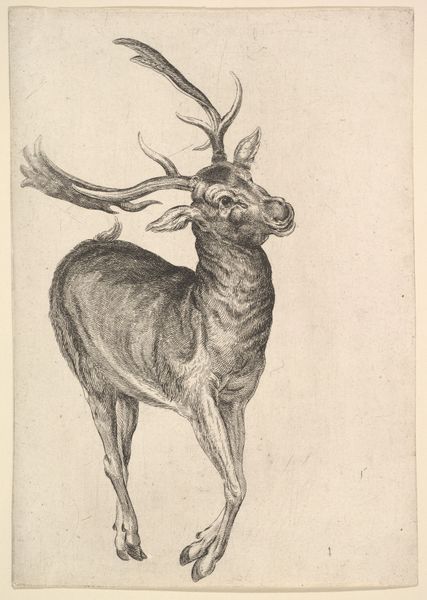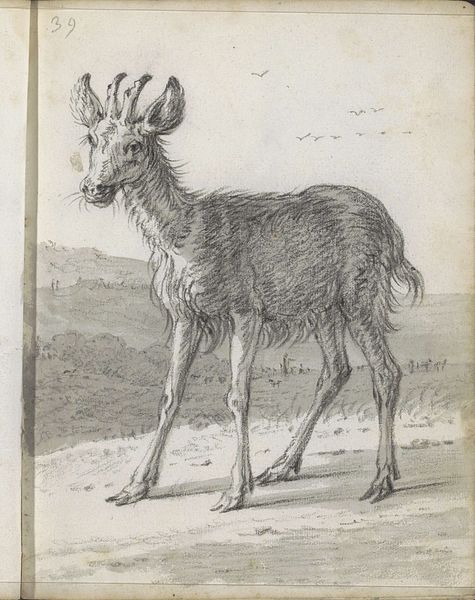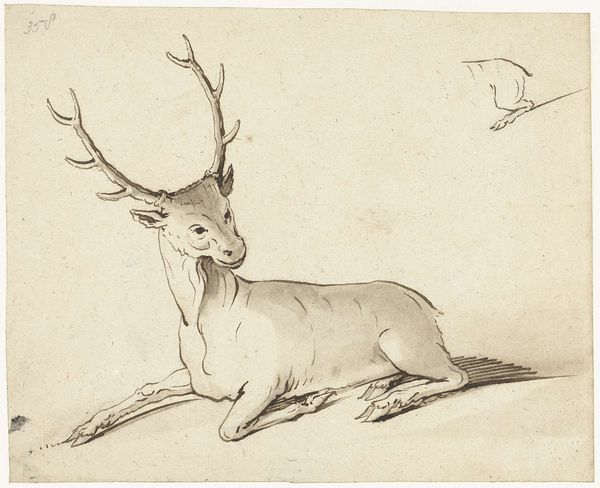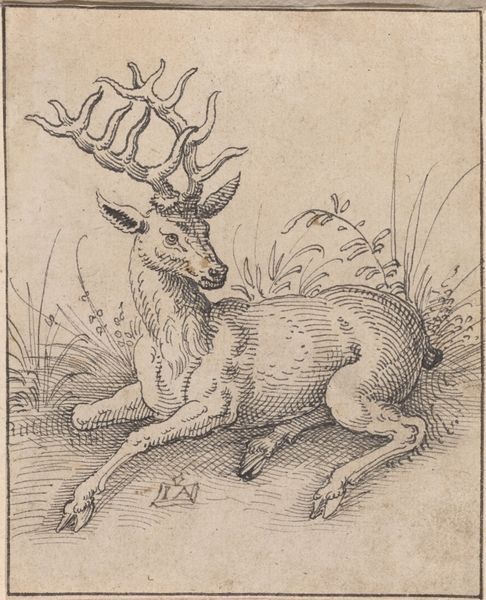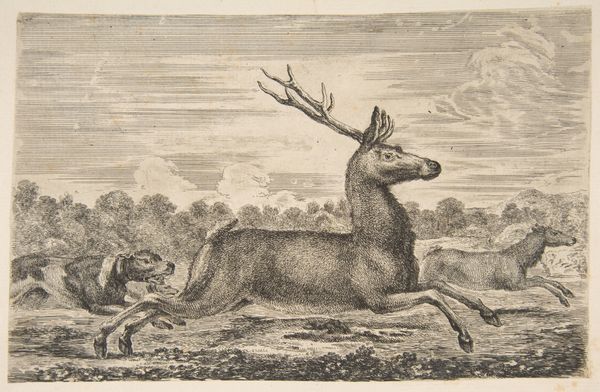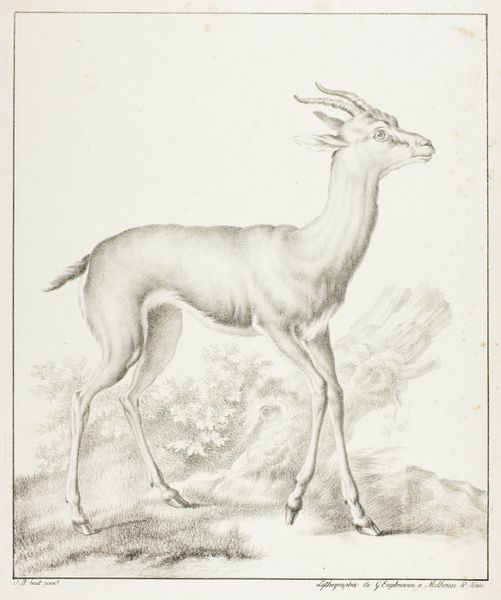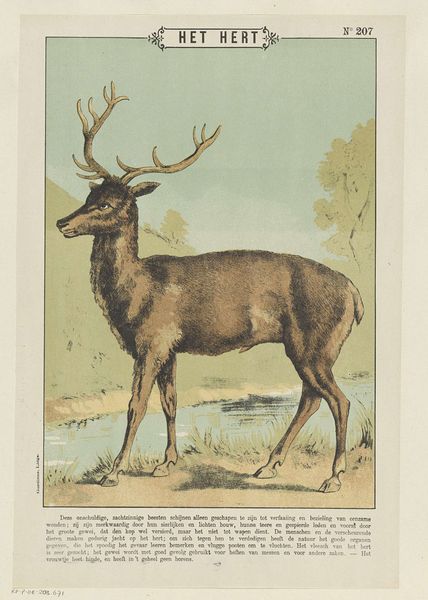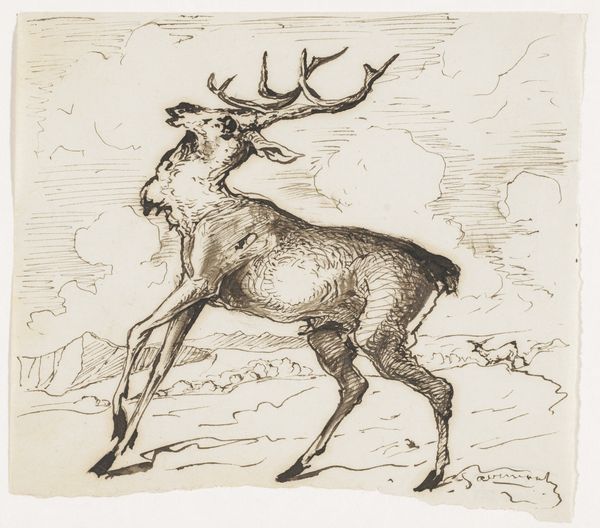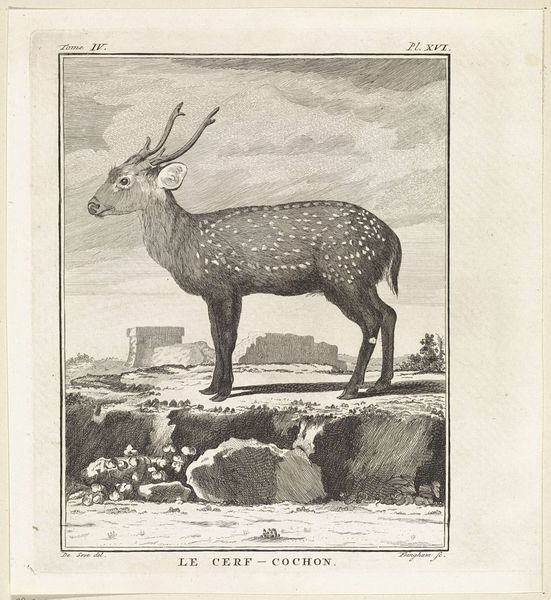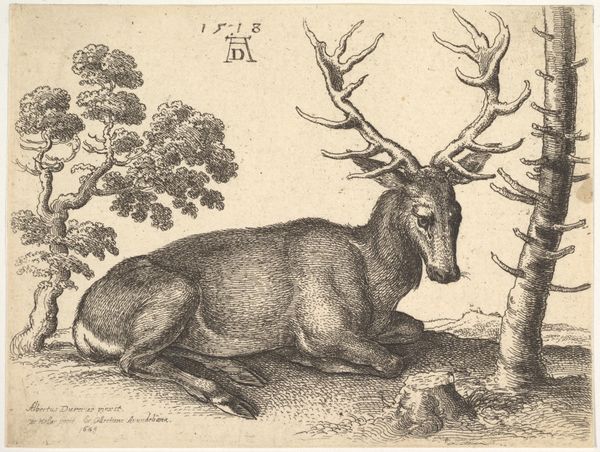
drawing, pencil
#
drawing
#
pencil sketch
#
landscape
#
figuration
#
pencil
#
realism
Copyright: Rijks Museum: Open Domain
Curator: "Heuvellandschap met liggend hert," or "Landscape with Reclining Deer," dates from 1666 and is attributed to Cornelis Saftleven. It’s rendered in pencil. Editor: There's an immediate vulnerability that strikes me. The animal looks trapped—almost melancholic, positioned within an implied hunting scene. Curator: Indeed. Consider the deer itself – its downcast gaze and the way it’s situated at the foreground dominate our perception. But look at the tiny figures atop the distant hill. It reveals the context of hunting and vulnerability of the animal. Saftleven understood the symbolism of the hunt within his cultural memory. Editor: The composition is so compelling. The soft gradations of gray wash establish form, volume, space. The hunter is small and sketchy compared to the imposing weight of the deer. Saftleven controls our attention expertly. Curator: And notice the symbolism of the hunter and hunted – the archetypal dynamic that echoes throughout art history. Deer, across cultures, have been associated with gentleness, swiftness, but also vulnerability. By showing this landscape in such detail and situating the animal, he creates a space for understanding our relationship with nature. Editor: Agreed, it is striking. It feels almost proto-Romantic, the way it juxtaposes human action against the serene, melancholic landscape. Even just rendered with the pencil’s delicate application to the paper. Curator: Absolutely. It’s not just about documentation, but rather the psychological insight into nature and the symbolism we’ve imposed upon it through centuries of narrative and history. This unassuming drawing becomes a window into something far larger. Editor: Looking at the artist's choices here regarding light and shade, he presents us not with a scientific illustration but an exercise in pathos. Curator: Exactly. The pencil marks are not just lines. They become the echoes of our cultural perceptions. Editor: It invites us to really contemplate those connections – even hundreds of years later. Thank you, this image’s resonance continues.
Comments
No comments
Be the first to comment and join the conversation on the ultimate creative platform.
